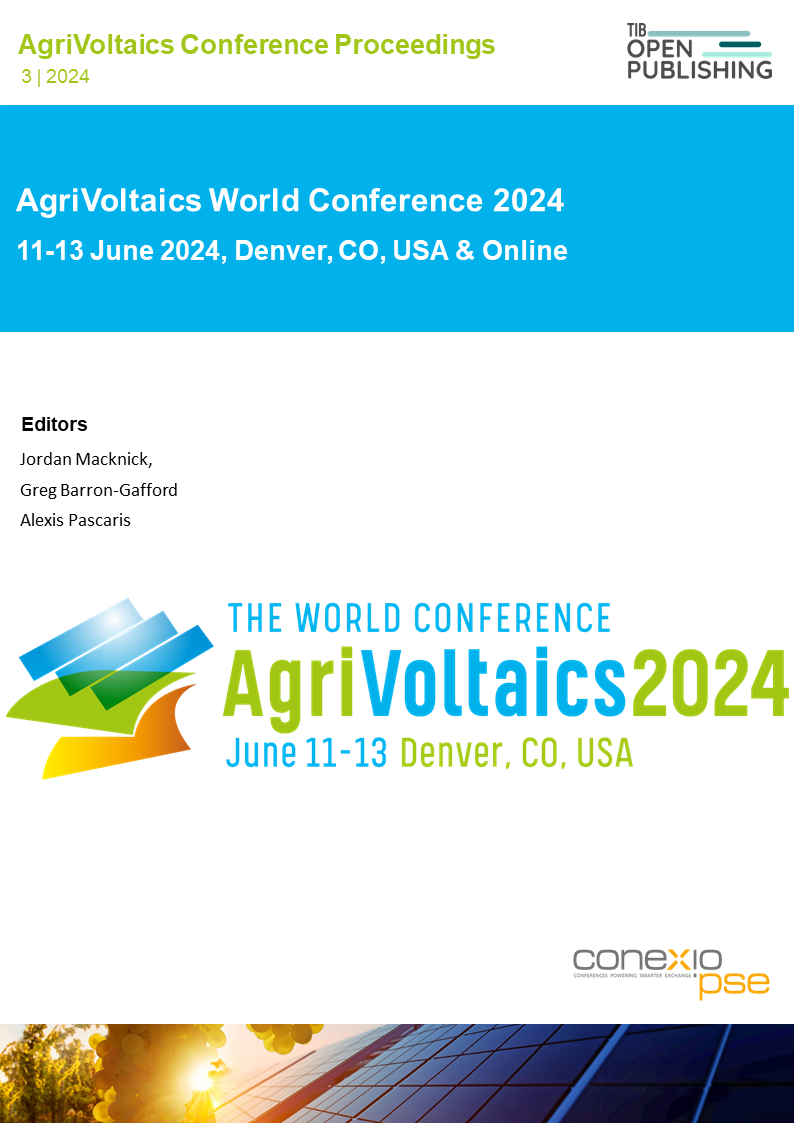Techno-Economic Analysis of a Marine Aquavoltaic System in Iran
DOI:
https://doi.org/10.52825/agripv.v3i.1333Keywords:
Aquavoltaic, Aquaculture, Floating PVAbstract
In oil-rich countries such as the Middle East, the affordability and viability of renewable technologies and resources is hampered by the accessibility and low cost of fossil fuel resources. This represents a significant barrier to the progress and acceptance of renewable energy. The use of aquavoltaics is one of the creative measures that can solve the land and food problem and increase the attractiveness for investors. In this method, the simultaneous integration of the two systems of fish farming and photovoltaics, both of which play a crucial role in providing food security and sustainable energy, partially solves the problems of the two systems when implemented separately. The results of this research have shown that the aquavoltaic system has an annual profit of 42.32% and within 4 years the initial investment cost is returned to the investor. In addition, the aquaculture system produces 498.48 kg of Salmo Salar fish annually and the floating photovoltaic system, which consists of thin-film modules, feeds 300.85 MWh of energy into the power grid annually. The considerable profitability and shorter payback period of this project compared to the interest rates offered by Iranian banks to depositors, as well as the results of previous studies, have prompted investors to support this initiative. This in turn has encouraged the expansion of renewable energy and reduced dependence on fossil fuels.
Downloads
References
C. L. Delgado, Fish to 2020: Supply and demand in changing global markets, vol. 62. WorldFish, 2003.
C. Hermann, F. Dahlke, U. Focken, and M. Trommsdorff, “Aquavoltaics: dual use of nat-ural and artificial water bodies for aquaculture and solar power generation,” in Solar Ener-gy Advancements in Agriculture and Food Production Systems, Elsevier, 2022, pp. 211–236. doi: 10.1016/B978-0-323-89866-9.00009-2.
S. Gorjian, B. N. Zadeh, L. Eltrop, R. R. Shamshiri, and Y. Amanlou, “Solar photovoltaic power generation in Iran: Development, policies, and barriers,” Renewable and Sustaina-ble Energy Reviews, vol. 106, pp. 110–123, May 2019, doi: 10.1016/j.rser.2019.02.025.
V. Crespi, J. M, and M. New, “FAO-Salmo salar.” Accessed: Jan. 17, 2025. [Online]. Available: https://www.fao.org/fishery/docs/DOCUMENT/aquaculture/CulturedSpecies/file/en/en_atlanticsalmon.htm
E. Haghshenas, “Critical Analysis of Previous Studies in relation to Identifying Suitable Areas for Marine Aquaculture in Coasts of Mazandran Province using Spatial Models,” Tarbiat Modares, 2017. [Online]. Available: https://parseh.modares.ac.ir/thesis/7061106
J. M. Elliott and M. A. Hurley, “A functional model for maximum growth of Atlantic Salm-on parr, Salmo salar, from two populations in northwest England,” Functional Ecology, vol. 11, no. 5, pp. 592–603, 1997, doi: 10.1046/j.1365-2435.1997.00130.x.
KrisWeb, “Water Temperature and Gulf of Maine Atlantic Salmon.” 2011. Accessed: Jan. 30, 2023. [Online]. Available: http://www.krisweb.com/krissheepscot/krisdb/html/krisweb/stream/temperature_sheepscot.htm
I. H. Lereng, “Study on the cooling effect for floating PV modules in thermal contact with water and the potential for modeling floating PV,” Master thesis, Norwegian University of Life Sciences, Ås, 2018. Accessed: Aug. 19, 2023. [Online]. Available: https://nmbu.brage.unit.no/nmbu-xmlui/handle/11250/2561972
R. Sureka, S. Kumar, S. Colombage, and M. Z. Abedin, “Five decades of research on capital budgeting – A systematic review and future research agenda,” Research in Inter-national Business and Finance, vol. 60, p. 101609, 2022, doi: https://doi.org/10.1016/j.ribaf.2021.101609.
K. A. Moharram, M. S. Abd-Elhady, H. A. Kandil, and H. El-Sherif, “Enhancing the per-formance of photovoltaic panels by water cooling,” Ain Shams Engineering Journal, vol. 4, no. 4, pp. 869–877, Dec. 2013, doi: 10.1016/j.asej.2013.03.005.
L. Wen, C.-H. Lin, and Y.-C. Lee, “Are Aquavoltaics Investable? A Framework for Eco-nomic and Environmental Cost-Benefit Analysis,” Sustainability, vol. 15, no. 11, 2023, doi: 10.3390/su15118965.
Published
How to Cite
Conference Proceedings Volume
Section
License
Copyright (c) 2025 Amin Momeni, Shiva Gorjian, Barat Ghobadian

This work is licensed under a Creative Commons Attribution 4.0 International License.
Accepted 2025-01-30
Published 2025-04-15
